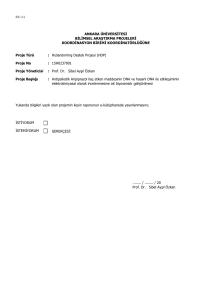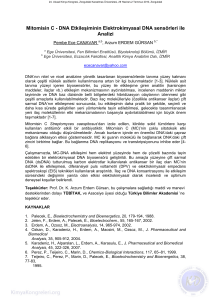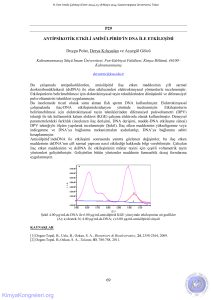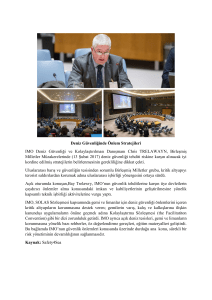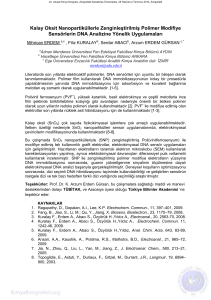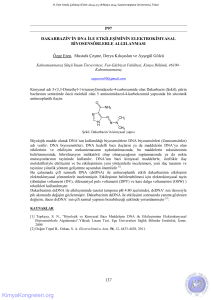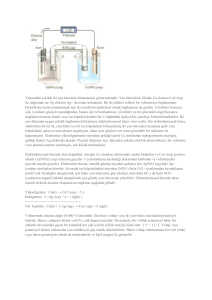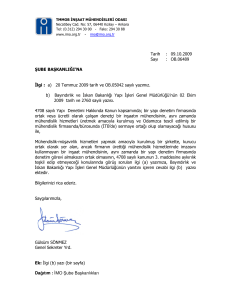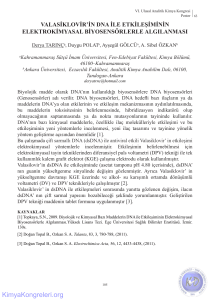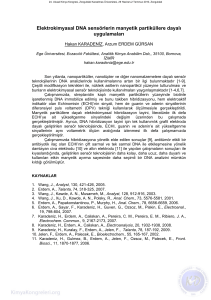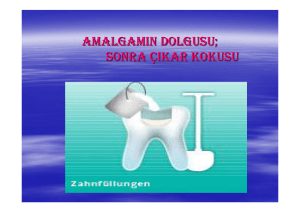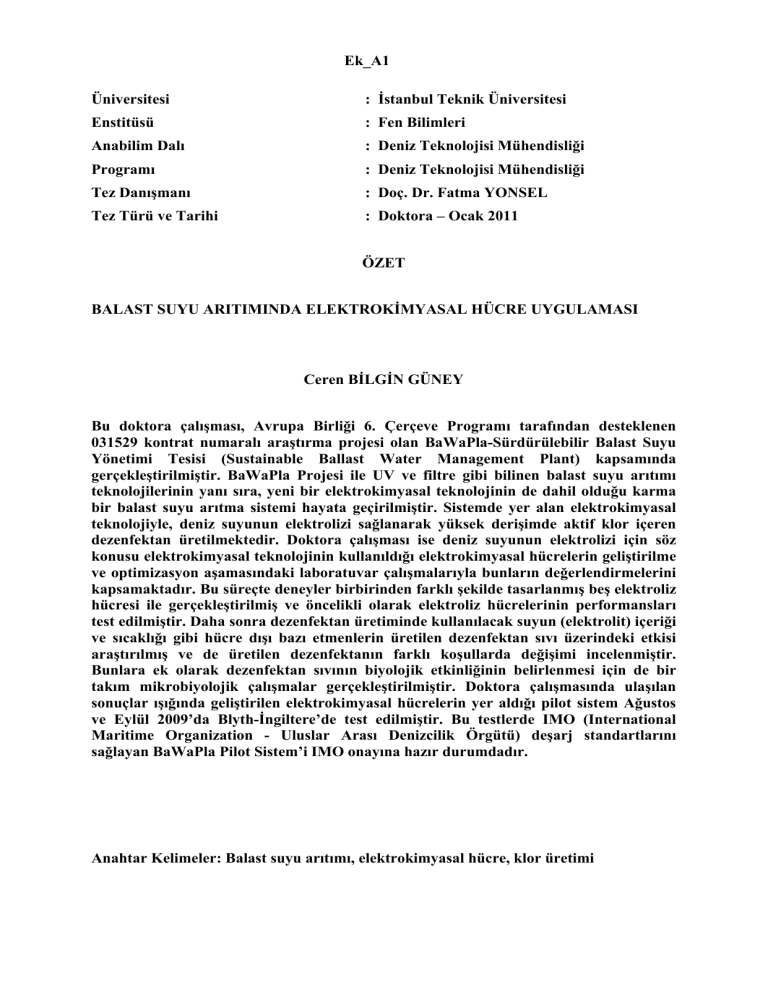
Ek_A1
Üniversitesi
: İstanbul Teknik Üniversitesi
Enstitüsü
: Fen Bilimleri
Anabilim Dalı
: Deniz Teknolojisi Mühendisliği
Programı
: Deniz Teknolojisi Mühendisliği
Tez Danışmanı
: Doç. Dr. Fatma YONSEL
Tez Türü ve Tarihi
: Doktora – Ocak 2011
ÖZET
BALAST SUYU ARITIMINDA ELEKTROKİMYASAL HÜCRE UYGULAMASI
Ceren BİLGİN GÜNEY
Bu doktora çalışması, Avrupa Birliği 6. Çerçeve Programı tarafından desteklenen
031529 kontrat numaralı araştırma projesi olan BaWaPla-Sürdürülebilir Balast Suyu
Yönetimi Tesisi (Sustainable Ballast Water Management Plant) kapsamında
gerçekleştirilmiştir. BaWaPla Projesi ile UV ve filtre gibi bilinen balast suyu arıtımı
teknolojilerinin yanı sıra, yeni bir elektrokimyasal teknolojinin de dahil olduğu karma
bir balast suyu arıtma sistemi hayata geçirilmiştir. Sistemde yer alan elektrokimyasal
teknolojiyle, deniz suyunun elektrolizi sağlanarak yüksek derişimde aktif klor içeren
dezenfektan üretilmektedir. Doktora çalışması ise deniz suyunun elektrolizi için söz
konusu elektrokimyasal teknolojinin kullanıldığı elektrokimyasal hücrelerin geliştirilme
ve optimizasyon aşamasındaki laboratuvar çalışmalarıyla bunların değerlendirmelerini
kapsamaktadır. Bu süreçte deneyler birbirinden farklı şekilde tasarlanmış beş elektroliz
hücresi ile gerçekleştirilmiş ve öncelikli olarak elektroliz hücrelerinin performansları
test edilmiştir. Daha sonra dezenfektan üretiminde kullanılacak suyun (elektrolit) içeriği
ve sıcaklığı gibi hücre dışı bazı etmenlerin üretilen dezenfektan sıvı üzerindeki etkisi
araştırılmış ve de üretilen dezenfektanın farklı koşullarda değişimi incelenmiştir.
Bunlara ek olarak dezenfektan sıvının biyolojik etkinliğinin belirlenmesi için de bir
takım mikrobiyolojik çalışmalar gerçekleştirilmiştir. Doktora çalışmasında ulaşılan
sonuçlar ışığında geliştirilen elektrokimyasal hücrelerin yer aldığı pilot sistem Ağustos
ve Eylül 2009’da Blyth-İngiltere’de test edilmiştir. Bu testlerde IMO (International
Maritime Organization - Uluslar Arası Denizcilik Örgütü) deşarj standartlarını
sağlayan BaWaPla Pilot Sistem’i IMO onayına hazır durumdadır.
Anahtar Kelimeler: Balast suyu arıtımı, elektrokimyasal hücre, klor üretimi
Ek_A2
University
: İstanbul Technical University
Institute
: Institute of Science and Technology
Science Programme
: Marine Technology Engineering
Programme
: Marine Technology Engineering
Supervisor
: Assoc. Prof. Dr. Fatma YONSEL
Degree Awarded and Date : PhD – Ocak 2011
ABSTRACT
ELECTROCHEMICAL CELL APPLICATION FOR BALLAST WATER
TREATMENT
Ceren BİLGİN GÜNEY
This dissertation is performed within in the scope of BaWaPla - Sustainable Ballast
Water Management Plant Project founded by European Union 6th Framework
Programme with the contract number 031529. A hybrid ballast water treatment system
including an innovative electrochemical technology besides well known technologies as
filter and UV, is implemented within the BaWaPla Project. Using the electrochemical
technology, disinfectant with high active chlorine content is produced through
electrolysis of seawater. This doctoral study compromises the laboratory works and
findings performed during development and optimization stages of new electrochemical
cells those took part in the mentioned electrochemical technology. Five different
electrochemical cells are used during the experiments and primarily their performances
are tested. Afterwards, the effects of external factors like substrate (electrolyte) content
and the temperature on disinfectant fluid is examined and the change of disinfectant
under different conditions is investigated. Additionally, several microbiological studies
are conducted to assess the biological effect of the disinfectant. The pilot system,
including the electrochemical cells developed in the light of the results achieved within
this doctoral study, is tested at August and September 2009 in Blyth-England. During
these tests, The BaWaPla system achieved the IMO (International Maritime
Organization) discharge standards and the system is ready for IMO approval.
Keywords: Ballast water treatment, electrochemical cell, chlorine generation

